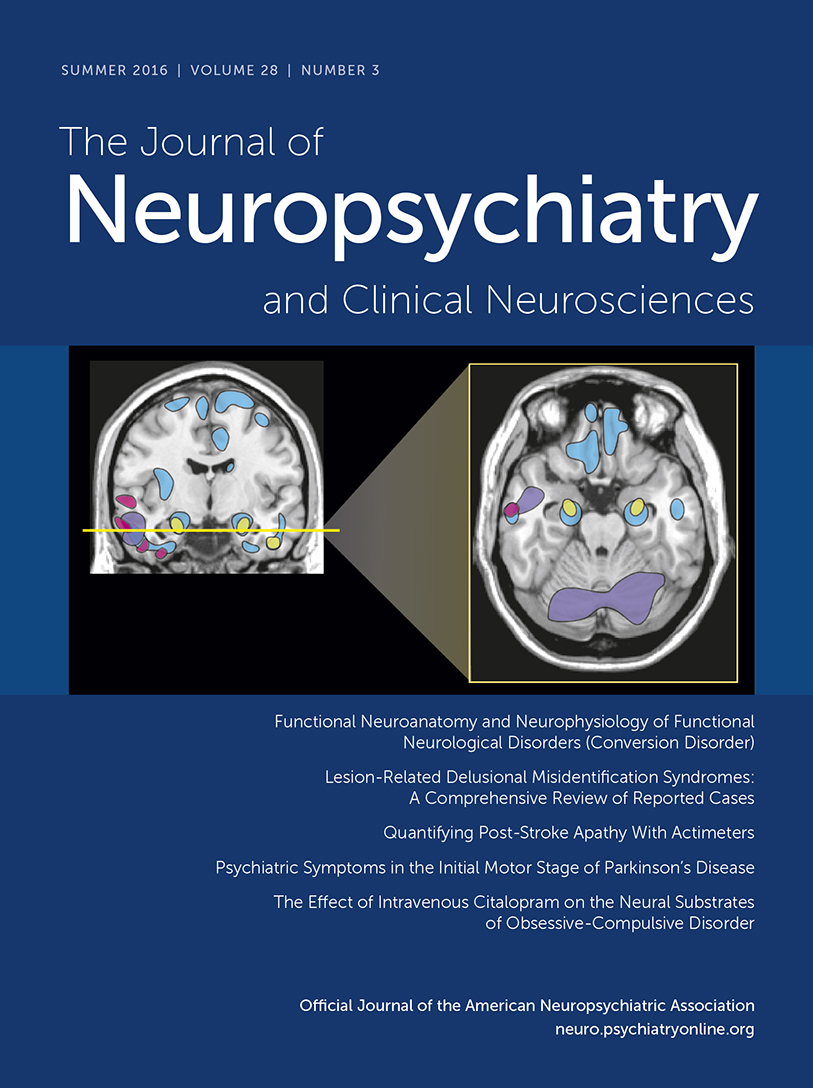Lesion-Related Delusional Misidentification Syndromes: A Comprehensive Review of Reported Cases
Abstract
Delusional misidentification syndromes (DMSs) are persistent delusions of hyper- or hypofamiliarity for meaningful persons and places in one's environment. This study set to determine the clinical course, neuroanatomical localization, neuropsychological abnormalities, and delusional content in patients with DMSs occurring after focal neurological injuries. Sixty-one patients were identified: 28 with hypofamiliar delusions, 27 with hyperfamiliar delusions, and, most surprisingly, six patients with both hypo- and hyperfamiliar delusions. Recognition is often delayed by months from the time of injury, and the delusions are self-limited. Patients with DMSs had right hemisphere (92%) injuries (specifically right frontal injuries in 63%), prominent memory impairment (73%), and multiple concurrent DMSs (29%).



